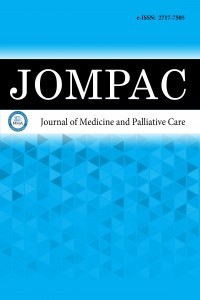1.
Attasaranya S, Fogel EL, Lehman GA. Choledocholithiasis, ascending cholangitis, and gallstone pancreatitis. Med Clin North Am. 2008;92(4):925-960. doi: 10.1016/j.mcna.2008.03.001
2.
Kimura Y, Takada T, Kawarada Y, et al. Definitions, pathophysiology, and epidemiology of acute cholangitis and cholecystitis: Tokyo Guidelines. J Hepato-Biliary-Pancreatic Surg. 2007;14(1):15-26. doi: 10.1007/s00534-006-1152-y.
3.
Tinusz B, Szapary L, Paladi B, et al. Short-course antibiotic treatment is not inferior to a long-course one in acute cholangitis: a systematic review. Digest Dis Sci. 2019;64(2):307-315. doi: 10.1007/s10620-018-5327-6
4.
Gomi H, Solomkin JS, Schlossberg D, et al. Tokyo Guidelines 2018: antimicrobial therapy for acute cholangitis and cholecystitis. J Hepato-Biliary-Pancreatic Sci. 2018;25(1):3-16. doi: 10.1002/jhbp.518
5.
Hou LA, Laine L, Motamedi N, Shakian A, Lane C, Buxbaum J. Optimal timing of endoscopic retrograde cholangiopancreatography in acute cholangitis. J Clin Gastroenterol. 2017;51(6):534-538. doi: 10.1097/MCG.0000000000000763
6.
Hakuta R, Hamada T, Nakai Y, et al. No association of timing of endoscopic biliary drainage with clinical outcomes in patients with non-severe acute cholangitis. Digest Dis Sci. 2018;63(7):1937-1945. doi: 10.1007/s10620-018-5058-8
7.
Miura F, Okamoto K, Takada T, et al. Tokyo Guidelines 2018: initial management of acute biliary infection and flowchart for acute cholangitis. J Hepato-Biliary-Pancreatic Sci. 2018;25(1):31-40. doi: 10.1002/jhbp.509
8.
Sugiura R, Naruse H, Yamamoto Y, et al. Very urgent endoscopic retrograde cholangiopancreatography is associated with early discharge in patients with non-severe acute cholangitis. Rev Esp Enferm Dig. 2022;114(3):133-139. doi: 10.17235/reed.2021.7995/2021
9.
Kiriyama S, Kozaka K, Takada T, et al. Tokyo Guidelines 2018: diagnostic criteria and severity grading of acute cholangitis (with videos). J Hepato-Biliary-Pancreatic Sci. 2018;25(1):17-30. doi: 10.1002/jhbp.512
10.
Sundararajan V, Henderson T, Perry C, Muggivan A, Quan H, Ghali WA.New ICD-10 version of the Charlson comorbidity index predicted in-hospital mortality. J Clin Epidemiol. 2004;57(12):1288-1294. doi: 10.1016/j.jclinepi.2004.03.012
11.
Owens WD, Felts JA, Spitznagel Jr EL. ASA physical status classifications: a study of consistency of ratings. Anesthesiol. 1978;49(4):239-243. doi: 10.1097/00000542-197810000-00003
12.
Cotton P, Lehman G, Vennes J, et al. Endoscopic sphincterotomy complications and their management: an attempt at consensus. Gastrointest Endosc. 1991;37(3):383-393. doi: 10.1016/s0016-5107(91)70740-2
13.
Lee F, Ohanian E, Rheem J, Laine L, Che K, Kim JJ. Delayed endoscopic retrograde cholangiopancreatography is associated with persistent organ failure in hospitalised patients with acute cholangitis. Alimentary Pharmacol Therapeut. 2015;42(2):212-220. doi: 10.1111/apt.13253
14.
Huang YC, Whu CH, Lee MH, et al. Timing of endoscopic retrograde cholangiopancreatography in the treatment of acute cholangitis of different severity. World J Gastroenterol. 2022;28(38):5602. doi: 10.3748/wjg.v28.i38.5602
15.
Buxbaum JL, Buitrago C, Lee A, et al. ASGE guideline on the management of cholangitis. Gastrointest Endosc. 2021;94(2):207-221. doi: 10.1016/j.gie.2020.12.032
16.
Manes G, Paspatis G, Aabakken L, et al. Endoscopic management of common bile duct stones: European Society of Gastrointestinal Endoscopy (ESGE) guideline. Endosc. 2019;51(05):472-491. doi: 10.1055/a-0862-0346
17.
Du L, Cen M, Zheng X, et al. Timing of performing endoscopic retrograde cholangiopancreatography and inpatient mortality in acute cholangitis: a systematic review and meta-analysis. Clin Translat Gastroenterol. 2020;11(3):e00158. doi: 10.14309/ctg.0000000000000158
18.
Iqbal U, Khara HS, Hu Y, et al. Emergent versus urgent ERCP in acute cholangitis: a systematic review and meta-analysis. Gastrointest Endosc. 2020;91(4):753-760. doi: 10.1016/j.gie.2019. 09.040
19.
Lyu Y, Wang B, Ye S, Cheng Y. Impact of the Timing of endoscopic retrograde cholangiopancreatography for the treatment of acute cholangitis: a meta-analysis and systematic review. Surgic Laparosc Endosc Percutaneous Techn. 2022;32(6):764. doi: 10.1097/SLE.0000000000001110

